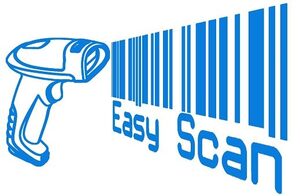Thermal transfer labels are an important component of many labeling and tracking applications, particularly those in industrial and commercial settings. These labels are produced using a thermal transfer printer, which applies heat to a ribbon coated with ink, transferring the ink onto the label material.
Thermal transfer labels are used in a wide range of applications, including product labeling, inventory tracking, and shipping and receiving. They are commonly used in industries such as manufacturing, retail, logistics, and healthcare, where accurate and durable labeling is essential.
One of the key benefits of thermal transfer labels is their durability. They are resistant to water, chemicals, and other harsh conditions, making them ideal for use in demanding environments. Additionally, thermal transfer labels are able to withstand extreme temperatures, making them suitable for use in both hot and cold environments.
Another advantage of thermal transfer labels is their versatility. They can be used with a wide range of label materials, including paper, synthetic, and specialty materials. This allows users to choose the label material that best suits their needs, whether they require a label that is tear-resistant, waterproof, or resistant to chemicals or UV radiation.
In addition to their durability and versatility, thermal transfer labels are also highly customizable. They can be printed with text, barcodes, graphics, and logos, allowing users to create labels that are tailored to their specific needs. Thermal transfer printers also offer a range of printing options, including high-resolution printing, variable data printing, and multi-color printing.
When selecting a thermal transfer label, there are a number of factors to consider. These include the label material, the ribbon type, and the printer settings. The label material should be chosen based on the application and environment in which it will be used, while the ribbon type should be selected based on the material and the required print quality.
Printer settings, such as print speed and darkness, can also have a significant impact on the quality of the printed label. It is important to optimize these settings to ensure that the label is legible and durable, while also minimizing ribbon and label waste.
There are a number of different types of thermal transfer labels available, each with its own unique characteristics and applications. Some of the most common types of thermal transfer labels include:
Paper labels – Paper labels are the most commonly used type of thermal transfer label. They are available in a range of weights and finishes, and are suitable for a wide range of applications.
Synthetic labels – Synthetic labels are made from materials such as polyester, polypropylene, or vinyl. They are more durable than paper labels and are resistant to water, chemicals, and other harsh conditions.
Specialty labels – Specialty labels are designed for specific applications, such as asset tracking, laboratory labeling, or freezer labeling. They may be made from materials such as cryogenic film, tamper-evident film, or ultra-high-temperature film.
Preprinted labels – Preprinted labels are produced using a thermal transfer printer and are pre-printed with text, graphics, or logos. They are commonly used for branding and product labeling.
Thermal transfer labels offer a number of benefits over other types of labeling systems, including direct thermal labels and inkjet labels. Direct thermal labels are produced without the use of a ribbon, and are generally less durable than thermal transfer labels. Inkjet labels, on the other hand, are more expensive and have a lower print quality than thermal transfer labels.
In summary, thermal transfer labels are an essential component of many labeling and tracking applications, particularly in industrial and commercial settings. They offer a range of benefits, including durability, versatility, and customizability, and are available in a range of materials and types to suit a wide range of applications. When selecting a thermal transfer label, it is important to consider factors such as the label material, ribbon type, and printer settings when selecting a thermal transfer label. Let’s take a closer look at each of these factors: Label Material: The label material is an important consideration when selecting a thermal transfer label. It should be selected based on the application and environment in which it will be used. For example, paper labels are suitable for general-purpose labeling, while synthetic materials such as polyester or vinyl are more durable and resistant to harsh environmental conditions.
Ribbon Type: The ribbon type should be chosen based on the material and required print quality. Wax ribbons are suitable for printing on paper labels and provide a lower level of durability, while resin ribbons are more durable and resistant to harsh environmental conditions, making them suitable for synthetic labels. Wax-resin ribbons provide a balance between durability and cost-effectiveness. Printer Settings: Printer settings such as print speed and darkness can have an impact on print quality and durability. It is important to optimize these settings for the label material and ribbon type being used to ensure the best possible print quality and durability.
Printer Settings: Printer settings such as print speed and darkness can have an impact on print quality and durability. It is important to optimize these settings for the label material and ribbon type being used to ensure the best possible print quality and durability. In addition to these factors, there are also other considerations when it comes to thermal transfer printers themselves. These include print resolution, print speed, connectivity, and ease of use. It is important to select a printer that is capable of producing high-quality, long-lasting prints, while also being compatible with a range of label materials and sizes. Other factors such as connectivity and ease of use can impact productivity and overall efficiency, and should be taken into account when selecting a printer.
Overall, There are a valuable tool for many businesses, particularly those in industrial and commercial settings. They offer a range of benefits, including durability, versatility, and customizability, and can be used with a wide range of label materials and printer types. By selecting the right thermal transfer labels and printers, businesses can improve their labeling and tracking processes, enhance their operational efficiency, and increase their overall productivity.
ZT220 Thermal transfer printer , which applies heat to a ribbon coated with ink, transferring the ink onto the label.



